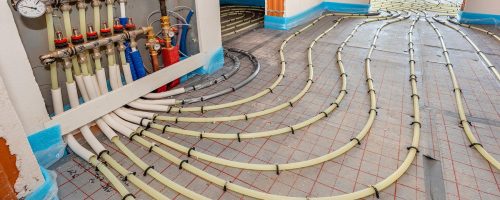Indoor air quality is crucial for your home to remain warm and healthy. As a result, allergies, respiratory troubles, and other health problems can be brought on by poor air quality. Underfloor heating is a practical technique to enhance air quality inside buildings. This blog post will discuss how underfloor heating can enhance indoor air quality.
How Does Underfloor Heating Work?
A form of a heating system called underfloor heating circulates warm water through pipes buried beneath the floor. The heated floor spreads heat into the space from the heated water. Underfloor heating systems come in two varieties:
Hydronic (wet) Underfloor Heating
Water heated by a boiler or heat pump is circulated through pipes beneath the floor in a hydronic (wet) underfloor heating system. The heated floor spreads heat into the space from the heated water. Because they require access to the underside of the floor, hydronic underfloor heating systems are typically installed during construction or renovation projects.


Electric Underfloor Heating
This type of system uses underfloor electric heating cables or mats. The electric heating elements warm up when the system is turned on, radiating heat into the space. Electric underfloor heating systems can be retrofitted into existing buildings or installed during construction since they are simpler to install than hydronic systems.
Unlike conventional heating systems, which rely on forced air to distribute heat across a space, underfloor heating systems radiate heat from the floor. As a result, there is less heat loss through the walls and ceilings, and the heating is more even and effective. Thermostats can also control underfloor heating to give personalised warmth to various rooms or zones in your house.
How Underfloor Heating Can Improve Indoor Air Quality
Circulation Of Air
Warm air is circulated through pipes placed beneath the flooring to create underfloor heating. Underfloor heating evenly disperses heat throughout the floor surface instead of conventional heating systems, which circulate air through vents or radiators. This evens the temperature and slows dust and allergies movement through the air.


Reduced Allergies
Standard heating systems spread pollutants like dust and allergens throughout the house. This can be very difficult for those with allergies or respiratory problems. Air circulation is not necessary with underfloor heating, which lowers dust and allergens and enhances indoor air quality.
Lower Amounts Of Humidity
High humidity can encourage mould and mildew, which can harm the quality of air inside a building. Your home’s humidity levels can be decreased by using underfloor heating since it provides more even and reliable heating. This can prevent moisture buildup, which encourages mould growth.
Underfloor heating can greatly improve indoor air quality. Underfloor heating can help minimise allergens, increase air circulation, and lower humidity levels by delivering more even and effective heating.

Contact JCW Underfloor Heating immediately if you want to learn more about underfloor heating and how it may improve your house. You can ask any questions you may have and get assistance from their team of professionals in selecting the ideal underfloor heating system for your requirements.
